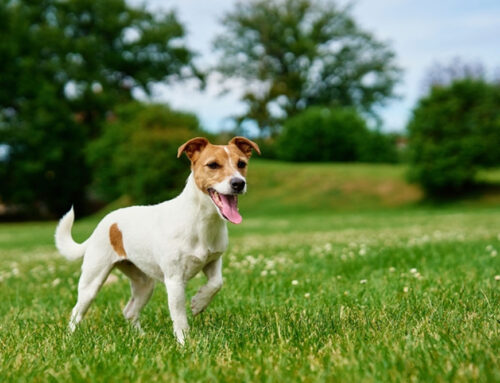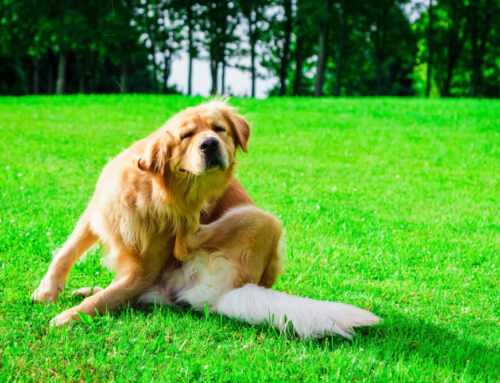Removing bacteria from under your pet’s gum line is important to prevent dental disease, which can cause significant health problems for your pet. This is accomplished by a professional veterinary dental cleaning, which is an essential part of your pet’s health care plan. The South Austin veterinarians at Oliver Animal Hospital want to explain what this procedure involves, so you know what to expect when you schedule your pet’s appointment.
Your pet’s history
We will ask you to provide a thorough history of your pet, including any preexisting conditions, medications they are taking, and any previous dental problems. In addition, we will ask if you have noticed any issues with your pet, such as bad breath, a decreased appetite, abnormal chewing, blood on their chew toys or in their food, or not wanting their face touched. We would also like to know what at-home dental care you provide for your pet. Do you brush their teeth regularly? Do you give them dental chews or treats? Are they on a prescription dental diet?
Your pet’s physical examination
We will perform a thorough physical examination on your pet, ensuring their temperature is normal, auscultating their heart and lungs for abnormalities, and palpating their lymph nodes and abdomen to assess irregularities. We will also make an initial examination of your pet’s mouth to evaluate their dental health. Signs indicating dental disease include bad breath, drooling, discolored saliva, swollen gums, tartar formation, pain on palpation of your pet’s mouth, and discolored, fractured, loose, or missing teeth.
Your pet’s blood work
We will perform blood work on your pet, to ensure they are healthy enough to undergo general anesthesia. Blood tests include:
- Complete blood count (CBC) — A CBC evaluates your pet’s red and white blood cells, and platelets, to assess your pet’s overall health, and to detect many conditions, such as infection and anemia.
- Biochemistry profile — This profile is a series of blood tests that evaluate the functional capacity of several body systems and organs, such as your pet’s liver and kidneys.
- Thyroid panel — If you have a senior pet, we may recommend evaluating their thyroid levels to determine if they have a thyroid condition, which could interfere with their ability to undergo general anesthesia.
Your pet’s anesthesia
General anesthesia is necessary to avoid any unnecessary pain or stress for your pet. In addition, our veterinary professionals cannot effectively remove the bacteria from under your pet’s gum line if they are awake. Having your pet anesthetized allows us to thoroughly evaluate your pet’s entire mouth, perform the necessary procedures to remove tartar, and address any problems, such as loose or infected teeth. Once your pet is properly sedated, a breathing tube will be placed to administer oxygen and anesthetic gas. This tube also protects your pet’s airway and lungs from water and debris. A trained professional will monitor your pet’s vitals throughout the procedure and recovery period, to ensure your pet is maintained at the appropriate anesthetic level.
Your pet’s oral X-rays
Only about half of your pet’s tooth structure is visible when their mouth is examined, so dental X-rays are needed to accurately evaluate your pet’s dental health. Issues that can be appreciated on X-rays include bone loss, dead and diseased teeth, broken teeth, and fractures in the jaw. These views are taken while your pet is under anesthesia to avoid causing them undue stress, and to ensure the views are clear.
Your pet’s mouth examination
After examining your pet’s dental X-rays, their entire mouth will be evaluated, every tooth will be probed to assess for periodontal pockets, and any loose or fractured teeth will be noted. These findings will be recorded in your pet’s dental chart.
Your pet’s teeth cleaning and polishing
Specialized dental tools will be used to remove the plaque and tartar from your pet’s teeth and under their gum line. These tools typically leave microscopic marks on the tooth’s surface, providing areas where bacteria can accumulate, so your pet’s teeth will be polished to remove these areas, and create a smooth tooth surface. In addition, products may be applied to help prevent plaque and tartar formation.
Your pet’s pain
Pain medications are frequently administered to pets before a professional veterinary dental, to reduce their pain and potentially decrease their anesthetic level. Depending on the extent of your pet’s dental disease, they may be sent home on pain medications. In addition, they may need antibiotics to address or prevent infection and systemic issues associated with dental disease.
Your pet’s at-home dental care

Plaque can start to form in as little as six hours after a professional cleaning, which means your pet will need at-home dental care to keep their mouth clean and healthy between dental cleanings. The best way to promote your pet’s dental hygiene is to brush their teeth daily, but many pets won’t tolerate this procedure. If your pet will not let you brush their teeth, you can give them dental chews, which can help remove some plaque and tartar accumulation. In addition, water additives and prescription dental diets are available to help reduce plaque and tartar. Ask our veterinary professionals if these products are right for your pet.
Ensure your pet’s dental health remains in tip top shape by bringing them in for regular professional veterinary dental cleanings. If you would like to schedule a professional dental cleaning, contact our South Austin veterinarians, who will keep your pet’s pearly whites sparkling.







Leave A Comment